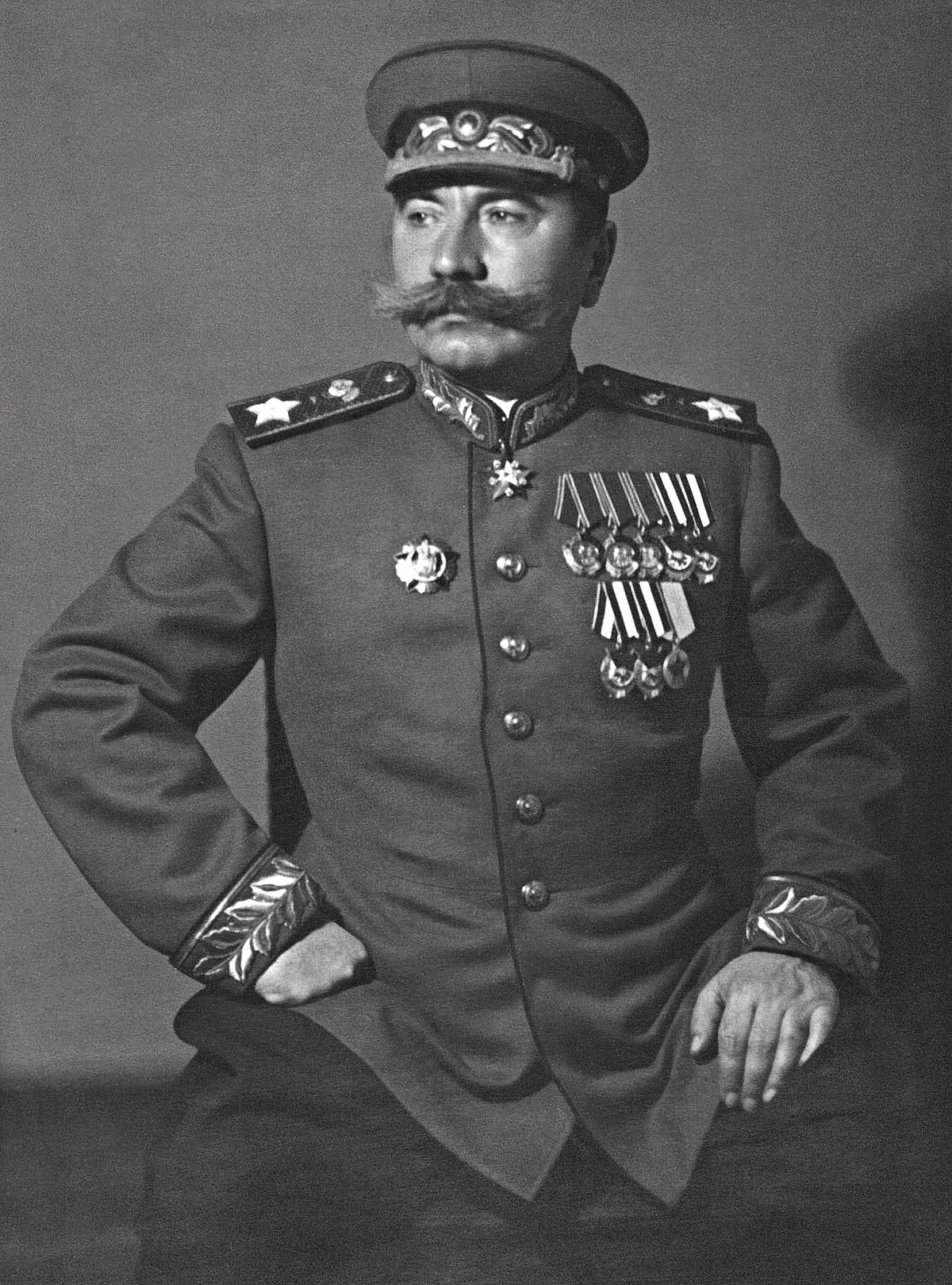Okay. I will continue about the Heroes of the Soviet Union.
On October 14, 1914, in the village of Fearless Kuban Region, in the family of a Kuban Cossack, an outstanding Soviet tanker, the most productive tank ace of the countries of the Anti-Hitler coalition, Hero of the Soviet Union, Guard Senior Lieutenant Dmitry Fedorovich Lavrinenko was born.
In 1931, Lavrinenko graduated from the school of peasant youth in the village of Voznesenskaya, and then - teacher's courses in the city of Armavir. After that, in 1931-1933, Dmitry Lavrinenko worked as a teacher at a school on the Sladky farm. On his initiative, a drama club, a string orchestra, and sports sections appeared in the village school. In 1933-1934 he worked as a statistician at the head office of the Khutorok state farm, then as a cashier at a savings bank in the village of Novokubanskoye. In 1934, Dmitry Lavrinenko volunteered for the Red Army and was sent to the cavalry, a year later he entered the Ulyanovsk Armored School, which he graduated in May 1938. Junior Lieutenant Lavrinenko took part in a campaign in Western Ukraine in 1939, and in June 1940 - in a campaign in Bessarabia.
The beginning of the Great Patriotic War, Lieutenant Lavrinenko met in the position of platoon commander of the 15th Panzer Division, which was stationed in the city of Stanislav on the territory of Western Ukraine. In September 1941, he arrived in the newly formed 4th (from November 11 - 1st Guards) tank brigade of Colonel Katukov and from October 4 he fought near the city of Mtsensk.
On October 6, during a battle near the village of Perviy Voin, Lieutenant Lavrinenko's tank group, consisting of four T-34 tanks, decisively attacked a column of German tanks. Constantly changing firing positions, appearing in different places, four thirty-fours made the impression on the Germans of the actions of a large tank group. In this battle, the tank crews destroyed 15 enemy tanks, four of which were on the account of Lavrinenko. By October 11, the brave tanker already had 7 tanks, an anti-tank gun and up to two platoons of German infantry.
Soon the brave tanker fought a unique battle with an enemy tank group that had broken through to our rear. Senior Lieutenant Lavrinenko stealthily brought his T-34 towards the German tank column near the highway leading to Shishkino. He ambushed his tank in an open field, taking advantage of the fact that the tank was painted white and was almost invisible on the snow-covered field. One tank Lavrinenko, practically point-blank, shot from the flank a column of 18 tanks, destroying 6 of them. By his actions, he allowed the troops that were under the threat of encirclement to leave. On November 19, near the village of Gusenevo, he destroyed 7 tanks in an oncoming battle with seven shells.
The brave tanker spent his last battle on December 18, 1941, on the outskirts of Volokolamsk, near the village of Goryuny. Attacking the enemy that had broken through our positions, he destroyed his 52nd German tank, 2 anti-tank guns and up to fifty German soldiers.
On the same day, after the battle, Senior Lieutenant Dmitry Fedorovich Lavrinenko was hit by a mine fragment.
The brave tanker spent his last battle on December 18, 1941, on the outskirts of Volokolamsk, near the village of Goryuny. Attacking the enemy that had broken through our positions, he destroyed his 52nd German tank, 2 anti-tank guns and up to fifty German soldiers.
On the same day, after the battle, Senior Lieutenant Dmitry Fedorovich Lavrinenko was hit by a mine fragment.










